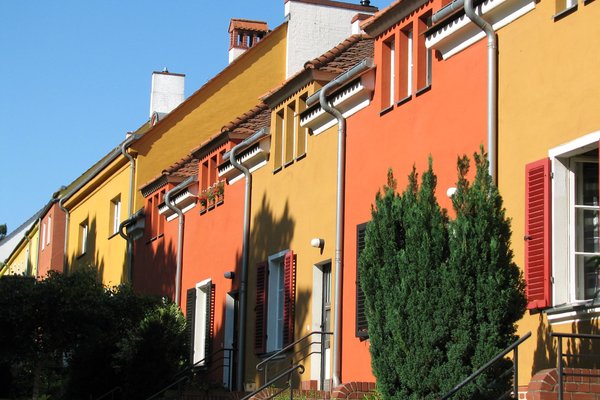Germany
Berlin Modernism Housing Estates
The Berlin Modernism Housing Estates represent low-income housing architecture from the early 20th century.
The six estates were urban and architectural innovations in search of improved housing and living conditions. The prominent architects Bruno Taut, Martin Wagner and Walter Gropius contributed to these projects, which also included garden design.
Community Perspective: Ian has perfectly described the mixed emotions this site evokes. Nan visited all locations and some more; he even stayed overnight in one. Hubert visited all 6 components in one day on public transport. The Hufeisensiedlung may be the most exceptional; Elena has revealed a tip to view this like a resident.
Site Info
Official Information
- Full Name
- Berlin Modernism Housing Estates (ID: 1239)
- Country
- Germany
- Status
-
Inscribed 2008
Site history
History of Berlin Modernism Housing Estates
- 2008: Revision
- Includes former TWHS Hufeisensiedlung (1981)
- 2008: Inscribed
- Inscribed
- Type
- Cultural
- Criteria
- ii
- iv
Links
- UNESCO
- unesco.de
- Official
-
- hufeisensiedlung.info — Infos on the Hufeisensiedlung and the small visitor centre.
- welterbesiedlungen-berlin.de — Berlin Housing Estates
- Related
-
- 1892.de — Renting a Schillerpark appartment.
- deutsche-wohnen.com — Several Housing Estates are owned by Deutsche Wohnen and can be rented.
- tautes-heim.de — One of the few (only) options to stay in one of the appartments.
All Links
UNESCO.org
- unesco.de — German Unesco site.
- whc.unesco.org — whc.unesco.org/
Official Website
- hufeisensiedlung.info — Infos on the Hufeisensiedlung and the small visitor centre.
- welterbesiedlungen-berlin.de — Berlin Housing Estates
Forum Discussion
- worldheritagesite.org — Visiting the Berlin Modernism Housing Estates
Related Resources
- 1892.de — Renting a Schillerpark appartment.
- deutsche-wohnen.com — Several Housing Estates are owned by Deutsche Wohnen and can be rented.
- tautes-heim.de — One of the few (only) options to stay in one of the appartments.
News Article
- July 9, 2008 spiegel.de — Berlin's Social Housing Gets World Heritage Status - the decision has been "an easy one"
Background Wikis
- de.wikipedia.org — Good info on the separate estates by the German Wikipedia
Community Information
- Community Category
- Human activity: Urban planning
Travel Information
Berlin hotspot
Recent Connections
-
Perfect Inscriptions
2008 -
Extension Supported
"c) consider the possibility of nominat… -
Extensions on Tentative List
Waldsiedlung Zehlendorf
Connections of Berlin Modernism Housing Estates
- Geography
-
-
Located in a Capital City
Berlin (Capital of Germany) -
In former GDR
-
- Trivia
-
-
Dubbed 'White City'
One of the estates is called "Weisse Stadt" = "White City -
In private ownership
Most of the houses are sold to private owners or cooperatively owned
-
- Architecture
-
-
International style
-
Reinforced Concrete
From Nomination file "Taut managed to harmonise unusual expressionist details like the reinforced concrete pillars at the loggias whose tipped attachments almost reach the eaves with the cubic strictness of neues bauen" Re the bridge house by Otto Rudolf Salvisberg "The 40 m wide building of reinforced concrete rests on four rows of pillars with narrow cross-section and with its four upper storeys it looks as if it was weightlessly floating between the five-storied adjacent buildings" -
Garden City Movement
Gartenstadt Falkenberg -
Modern Urban Planning
improving housing and living conditions for people with low incomes through novel approaches to town planning (brief description) -
Designed by Walter Gropius
He was one of a group of Architects working on Siemensstadt. Individual rows of houses within the overall plan were handed out to each architect to design and Gropius developed 2 in the eastern section of Siemensstadt at Jungfernheideweg. -
Expressionist architecture
Bruno Taut is one of the style's main architects. He was responsible for the design of several of the Berlin Modernism Housing Estates. The nomination file clearly mentions the Siedlung Schillerpark ("The architecture with its red brick walls, the flat roofs and the plastic shapes of the façades with loggias and balconies particularly reflects the Amsterdam school with its traditional, strong brick buildings.") and the Hufeneisensiedlung as having expressionist features.
-
- Damaged
-
-
Destroyed during invasion
Russian attack on Berlin in 1945
-
- World Heritage Process
-
-
Extensions on Tentative List
Waldsiedlung Zehlendorf -
Extension Supported
"c) consider the possibility of nominating the housing estates constructed in Frankfurt during the Weimar Republic period, in order to complete the German contribution to the development of housing ensembles during the first half of the 20th century" (Decision 32 COM 8B.32) -
Perfect Inscriptions
2008 -
Extended from original TWHS
Originally only Hufeisensiedlung.
-
- Human Activity
-
-
Siemens AG
"the Siemensstadt was constructed by a private housing cooperative as worker housing for Siemens' nearby electrical factory, which employed 60,000 workers. The streets and squares of the settlement were named for engineers, physicists and inventors whose performance contributed to the success of Siemens AG." (Wiki)
-
- WHS on Other Lists
-
-
Europa Nostra Award
Taut's home (2013 Prize for Conservation) -
European Capital of Culture
Berlin, 1988
-
- Timeline
-
-
Built in the 20th century
Earliest is Tuschkastensiedlung Falkenberg, 1913-16
-
- WHS Hotspots
-
-
Berlin hotspot
In Berlin, all locations are reachable by U-Bahn
-
News
- spiegel.de 07/09/2008
- Berlin's Social Housing Gets World…
Recent Visitors
Visitors of Berlin Modernism Housing Estates
- Adrian
- Adrian Turtschi
- Afshin Iranpour
- Alexander Barabanov
- Alexander Lehmann
- Alexander Parsons
- A. Mehmet Haksever
- Ana Lozano
- Argo
- Artur Anuszewski
- AS
- Ask Gudmundsen
- Aspasia
- Assif
- a.thum
- Atila Ege
- awestix
- Badwater
- Bamse
- BaziFettehenne
- Bernard Joseph Esposo Guerrero
- BeyondMonkey
- Bill Maurmann
- Bin
- Birgitte Sørensen
- BJGreasly
- Boj
- Bram de Bruin
- c82wc1
- Can SARICA
- Carlos Sotelo
- Casey
- Caspar
- cc1967
- Christer Sundberg
- Christian Wagner
- christof
- Christoph
- Christravelblog
- Cirene Moraes
- Claire Bradshaw
- Clyde
- Cobaltrage
- Colossus
- Csaba Nováczky
- CugelVance
- Dagmara
- Damientournay
- Daniela Hohmann
- Daniel Chazad
- Daniel Gabi
- Danny L
- David Berlanda
- David Marton
- DavidS
- del
- Delphine Delaunay
- Dimitar Krastev
- Dirk-pieter
- Dorejd
- Dr. Caligari
- Dwight Zehuan Xiao
- Elena Y
- Elf21
- Elia Vettorato
- eljx1988
- Ellen Nielsen
- Els Slots
- erdsaumnaht
- Erik Jelinek
- Errol Neo
- Eva Kisgyorgy
- Fan Yibo
- Farinelli
- Fede1203
- fedemarch92
- Federico P.
- Feldhase
- Felicité
- Femke Roos
- FrankW
- Frederik Dawson
- FS
- Gary Arndt
- gautamiyer23
- Geert Luiken
- George Gdanski
- GeorgeIng61
- GerhardM
- Gernot
- Grendel Gongan
- grimloch
- Grzegorz Andruszkiewicz
- HaraldOest
- Harald T.
- Harry Mitsidis
- headventure
- henrik_hannfors
- heywhatever2
- Hubert
- Hurrvinek
- Iain Jackson
- Ian Cade
- Ingemar Eriksson
- Ingrid
- inomusay
- Ivan
- Ivan Rucek
- Jaakkotoivanen
- Jacob Choi
- Jakob F.
- James Bowyer
- Jana and Matt
- Janina Lehmann
- janis
- Janos
- Jan-Willem
- Jan Zimmermann
- Jarek Pokrzywnicki
- Jasam
- Javier Coro
- Jay T
- Jeanne OGrady
- Jens
- Jesse S 2010
- Jezza
- Joel on the Road
- John Smaranda
- Jonas Hagung
- Jonas Kremer
- Jon Eshuijs
- jonstst
- Joyce van Soest
- Juha Sjoeblom
- Just_hatched
- jxrocky
- KarenBMoore
- Kasia M.
- Kasper
- kiank37
- Kjlauer
- Klaus Freisinger
- Knut
- Kristin
- Krzysztof B
- Kurt Lauer
- kutasp
- La Concy
- Lado Joel
- Lara Adler
- LaVale
- leroykstlj
- lichia
- Linneaaasaurus
- Linz
- Lisu Marian
- Lithobates
- ljowers
- Loic Pedras
- Luboang
- Lucio
- Ludvan
- Luis Filipe Gaspar
- Lukasz Palczewski
- lynnz317@aol.com
- Maciej Gil
- Mahuhe
- Małgosia Łupicka
- Manuelfunk
- MarcoB_0
- Marcobrey
- Martin
- Martina Rúčková
- Marton Kemeny
- Matejicek
- MatusBeber
- Max
- MaxHeAnouBen
- MaYumin
- MH
- Mia esguerra
- Michael Novins
- michaelsballard
- Michael Turtle
- Mikko
- Miloš Tašković
- miri2808
- MMM
- Moe
- Mo-han Je
- Mohboh
- Morodhi
- nan
- Nicole Lampos
- Nihal Ege
- nikolamus
- Nikolay Marinov
- NoahFranc
- PabloNorte
- palka25
- Patrik
- Paul Schofield
- peacemaker2142
- PeterH
- Peter Lööv
- Petteri
- Philipp Leu
- Philipp Peterer
- phillipmeng
- Pieter Dijkshoorn
- Pink Bunny
- Piotr Wasil
- Porcho
- Potsdamer
- pressdm
- Purrfect
- Rafał Kałczuga
- Ralf Regele
- Randi Thomsen
- ReallyDeepThoughts
- Remigiusz
- Reza
- rivr
- RobRos
- Rodinia
- Roel Sterken
- Roger Enarsson
- Roger Ourset
- Roman Bruehwiler
- Roman Raab
- Rudegirl
- Sabrina Liebehentschel
- Sandra!
- Schnitzel
- Sebasfhb
- Sehnsuchtsbummler
- serghei.belous
- Sergio Arjona
- Shandos Cleaver
- Shijie ZHU
- shoaibmnagi
- Slavi
- sncjob
- Solivagant
- Stanislaw Warwas
- Stijn
- Svein Elias
- Szabolcs Mosonyi
- Taotao Chen
- Tarquinio_Superbo
- Tcchang0825
- Tevity
- Thomas Buechler
- Thomas van der Walt
- Thorben
- tingmelvin
- Tom Flaten
- tony0001
- Tony H.
- triath
- Tsunami
- Twobaconsandaboston
- usagi1974
- Vanessa Buechler
- Van Hung
- Vincent Cheung
- VLabhard
- voyager
- WalGra
- Walter
- Westwards
- WILLIAM RICH
- Wojciech Fedoruk
- Wo_ko
- wolfboy
- wrung24
- Xander Huang
- Xiong Wei
- Xiquinho Silva
- YaroMir
- Yevhen Ivanovych
- Yi Han Goh
- Zach
- Zhenjun Liu
- Zoë Sheng
- Zos M
- Александар Стојиљковић
Community Reviews
Show full reviews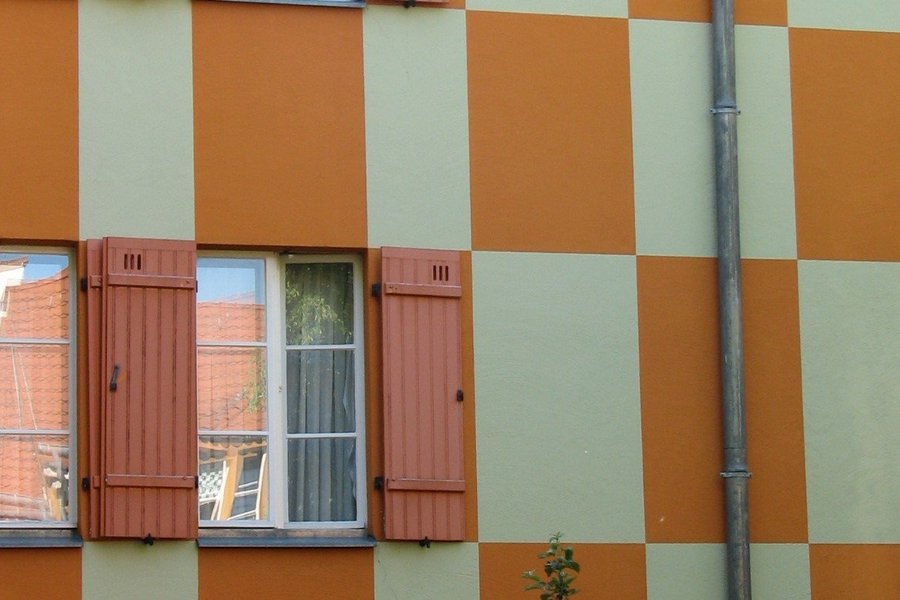
Admittedly, I was not excited to check off this site — I wasn’t sure what to expect, and six components spread out seemed daunting. And it was hard to find information.
But, I ended up visiting all components over three days in Berlin and the site ended up winning me over. But, I am a sucker for modern architecture, Bauhaus, and the likes.
I got more out of the sites for two reasons. First, I started at the Into Station and Cafe at Briz, which is open on Friday and Sunday afternoons. There is a museum (1 euro entry fee) with a ton of information in German and English and a model apartment. It was the highlight of my visit. Second, www.welterbe-moderne-Berlin.de has great information on these sites and even mini walking “tours” pointing out key components of all the sites with maps It was tremendously helpful and I got a lot more out of the sites as a result
Logistics: I will start out with a warning: DO NOT BOOK the Ticket B tour of Siemensstadt, which advertises going into an apartment in Siemensstadt, because the apartment visited is in a nearby complex and belonged to one of the Siemensstadt architects, but it was built 30 years after Siemensstadt and is NOT part tix the UNESCO site. I wasted 39 euros and 5.5 hours (transit one hour each way and a 2.5 hour tour) to end up not getting anything more out of the experience than …
Keep reading 0 comments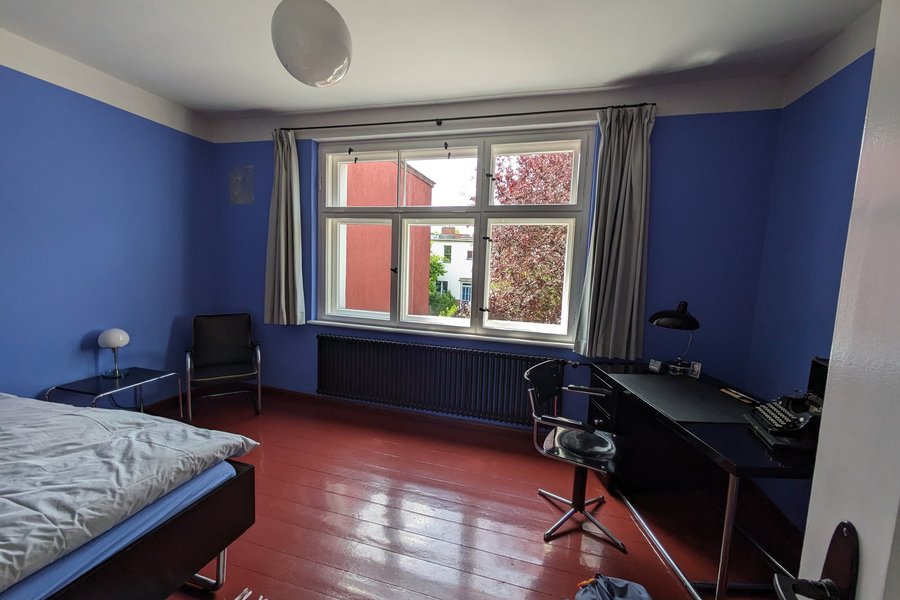
In 2012, while visiting Berlin for a job interview, I took the opportunity to visit three locations of the Modernism Housing Estates before my interview. The interview was at lunchtime, so I had ample time in the morning. I began my visit at Schillerstraße, then walked to Weiße Stadt before taking a bus and train to Wohnsiedlung Carl Legien.
My impression of these sites at the time aligns well with Ian's summary: In the suburbs of post World War 2 Germany, they look pretty common place, a testament to the significant influence of the architects (most notably Taut and Scharoun) and ideas behind them. What sets these early examples apart from their post-war imitations is their superior design. They exhibit thoughtful use of colour and form, a sense of artistry and artisanship, and a social commitment to enhancing workers' lives — qualities often missing in later copies.
These housing estates belong to the Neues Bauen movement, which is often confused with Bauhaus. While the two are closely related, they are distinct. While Bauhaus aimed to create architecture for the masses, it largely ended up catering to the wealthy; Fagus was built by and for the factory owner, not the workers. Neues Bauen, on the other hand, successfully provided affordable, modern housing for the working class — a legacy that continues today with these housing estates still providing affordable housing to Berliners.
Turns out, I got the job and visited Berlin frequently for work, though after-work visits to these suburban locations …
Keep reading 0 comments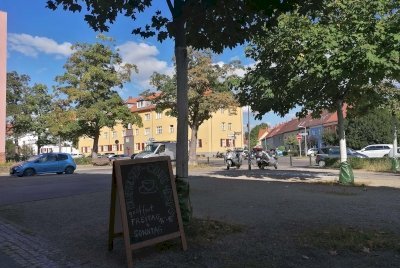
I visited two of Berlin's six inscribed housing estates on a Friday morning. I had picked, surprise surprise, Falkenberg (for its beauty) and Hufeisensiedlung Britz (for its infostation/cafe, more on that later), and neither of them disappointed. Being where they are they both have very good rail connections, and I was able to make a detour for a packed lunch in Tempelhof Airfield between the two and still have a very relaxed itinerary.
I love walking around picturesque garden villages, so Falkenberg was always going to go over well. It's a bit out of place with the other examples, but it speaks volumes to Taut's brilliance and can't be omitted. It's very compact - hence why photographs of it are usually so close up - but never feels it thanks to its cleverly placed greenery. There's only one proper road, the first part of the estate to greet train users, that runs through it, so traffic basically doesn't exist to interrupt the 'vintage' feel. (For supplies or the bathroom you'll need to talk a short walk to the 'Taut Passage' shopping centre, which makes no attempt to match the vibe!)
If you want a taster of how Taut's interiors looked, you'd do well to visit Hufeisensiedlung Britz. There they have a small 'Infostation', which is in reality a community cafe that's open on Fridays and Sunday afternoons. For a mere €1.50 you can get a very nicely brewed coffee, sit outside (or at the window if you'd prefer), …
Keep reading 0 comments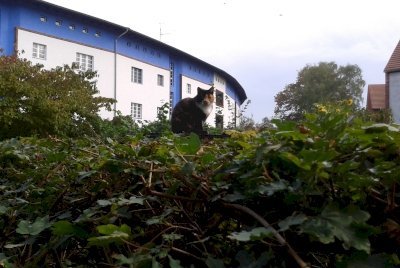
I visited 5 of 6 locations soon after the inscription some 10 years ago, but still have not managed to see the most appreciated component by our communitity - Tuschkastensiedlung. The first visit I would call as "exploratory", and I was not disappoined. My favorit component is Hufeisensiedlung and I visited this place then several times on every occasion. The reason is not only convenient location on the U-bahn line but very delicate atmosphere I feel during every my visit.
I like not only the blueish horshoe building with the pond in the middle but also dark red small buildings assembled to rhombus shapes located to the West from the main building.
I was thinking intensively why I tend to visit the Hufeisen, and my answer is that I do not take this site as an intelectual construct that was evident from other reviews - that the site is interesting because of permanent impact on few prominent Bauhaus architects on our everyday life. Instead, I take it in purely emotional way based on what I can see on the site but not what I have read about modern architecture before. In fact, I usualy (but not always) use this principle also during my visitits to medieval sites. To conclude, parts of this WHS emanate similar spirit to me as I can feel for example in Siena. This justifies its OUV in my opinion (I hope it is not too esoteric - see PHOTO).
Keep reading 0 comments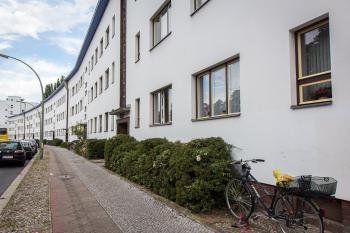
This is a slightly odd WHS - a bunch of apartment buildings, you ask? But they are actually surprisingly interesting. I quite enjoy sites that are still living parts of a city.
I visited three of the six apartment blocks, using a rental cycle to get between them and then back to my accommodation in the centre of Berlin. First I went to Wohnstadt Carl Legien, then Weiße Stadt and then Siedlung Schillerpark.
There weren't many people around and nobody seemed to mind that I was wandering through the grounds and taking photos - I guess they're used to it.
I have since learned that there are actually some tours you can do which will take you inside some of the apartments - I wish I had done one of them because I think it's hard to completely understand the significance until you've seen how people live in the blocks.
Keep reading 0 comments
On a sunny summer Saturday, I made full use of a public transport day ticket and visited 3 of the 6 inscribed parts of this site. I first went to Gartenstadt Falkenberg (near the Grünau S-Bahn stop), then to Britz (near the Parchimer Allee underground stop), and then to Siemensstadt (stretching between the Halemweg and Siemensdamm underground stops). All 3 were easily accessible by underground or S-Bahn, and although I'm not a big fan of modern architecture in general, it was quite pleasant to criss-cross the city and see Berlin from a different perspective. Each estate seemed to provide a high quality of living - I enjoyed Falkenstadt for its park-like setting and multi-coloured houses, and Britz for its unique horseshoe shape and pretty pond in the centre of the horseshoe. To me, Siemensstadt was the least attractive of these 3, as it features row after row of multi-storeyed houses where only the balconies are somewhat unique.
Keep reading 0 comments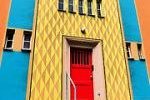
I visited this WHS in May and June 2014. Once I landed in Schönefeld airport, I drove for about 10-15mins to Gartenweg to visit Tuschkastensiedlung Falkenberg. There is an information board in English and German to illustrate which houses are inscribed in which year they were built. It's a pleasant stroll in a tree-lined and cobblestoned street with colourful painted houses, most of which having well kept gardens. I took a couple of photos of the most striking houses and facades but I didn't feel comfortable taking photos of people's private property (especially since there were quite a few elderly women killing time near their windows!). A few days later I drove to the Hufeisensiedlung Britz which I found to be less interesting on the whole since its horseshoe shape is not that evident from the pavement. I also spotted it for a few seconds just after take off from Berlin and then it was easy to recognise from its shape. I'm glad I visited this WHS as there aren't too many modernism sites on the list. However, I wouldn't describe this WHS as one of Germany's best WHS and on the whole I wouldn't describe it as having outstanding universal value.
Keep reading 0 comments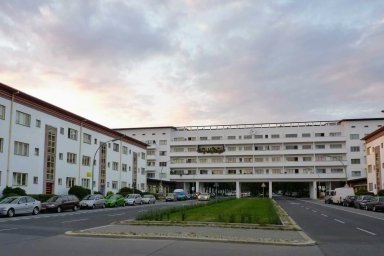
As other reviews have shown, it is possible, if you wish, to see all 6 sites in a day using the U-Bahn. For those with less interest or stamina our experience of taking in just 3 with a car might be of use. In August 2013 we were not visiting Berlin but needed to cross it from South to North. Our general plan was to by pass the city to the west and, whilst so doing, take in the North Western sites at Siemensstadt, Schillerpark and Weiße Stadt. This took around 2 hours extra elapsed giving what we felt was “reasonable” viewing/“walking around” time. We started around 5.30pm and didn’t find parking or traffic a problem.
We approached from the South on the A100 and the turn to Siemensstadt is well signed where the Stadtring is joined by the A111. The road leads to the centre of Siemensstadt via Siemensdamm – turn right at the U-Bahn station along Jungfernheideweg and you are in the Siedlung. We parked without payment or limitation on the right in Goebelstr. The WHS aspects of Siemensstadt are well signed with an information board (in German) in front of each block. At the end of Goebelstr, where it reaches Goebelplatz, is an information centre/café - but it was closed when we were there. The variety of the estate buildings demonstrates well the fact that 6 different architects were each given freedom to develop their own style – my architectural knowledge wouldn’t have been enough to …
Keep reading 0 comments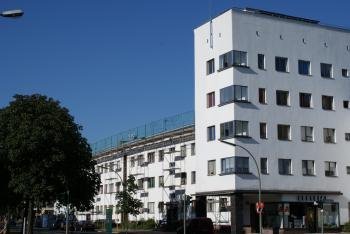
I can imagine that for some people it is difficult to understand why these housing estates are a WHS. Certainly many visitors think: What is so special here? That looks just like my neighborhood. But as Ian Cade wrote in his review: this should be taken as evidence for the success and impact of this architecture.
The housing estates are spread widely over Berlin, but I managed to visit them all in one day. But I had to start early in the morning and I spent much time in S-Bahn trains and stations. All estates have in common that they are very well maintained. Fortunately, the significance of the estates was already recognized in the 1960s and 70s and the buildings have been restored, in West Berlin as well as in the former GDR.
The modern concept of social housing differed significantly from the traditional tenement blocks. The building blocks were open at the edges, there were many green areas and courtyards. The apartments had a high standard with bathrooms and private kitchens and many of them have balconies. The estates are different in their style and appearance. The Hufeisensiedlung Britz is probably the most exceptional of the six estates because of its central structure in form of a horseshoe. Falkenberg is a suburban estate with terraced houses and gardens, striking are the bright colors of the houses. The other estates are rather urban residential areas. Schillerpark was the first modern urban estate in Berlin, with its red brick facade …
Keep reading 0 comments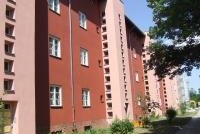
Compared to the drab dilapidated post-war housing estates of Britain I found these housing estates in Berlin well maintained and architecturally inspired. In the course of a day, and using the U and S-bahns and the buses I reached all the locations listed. I found the pastel coloured terraced houses at Falkenburg the most attractive.
Keep reading 0 comments
I moved to Berlin a couple of years ago and am gradually working my way around the estates, and have written in particular about the Britz estate here:
architectureinberlin.wordpress.com/2008/10/11/the-britz-horseshoe-estate-bruno-taut-martin-wagner/
I agree with Ian Cade's comment, that the estates can be a little underwhelming. I also feel that they wouldn't be my first choice of a place to live - not because of the quality of design, which is very high - but because they feel rather suburban and far from the centre of things.
Of course this is probably missing the point; it's the terrible slum conditions that these estates sought to replace which need to be considered. It's perhaps ironic that so many younger/wealthier Berliners choose to live in the high density older apartments of Prenzlauerberg, and more increasingly in areas such as Kreuzberg, many of which were built as working class Mietskeserne accomodation.
Keep reading 0 comments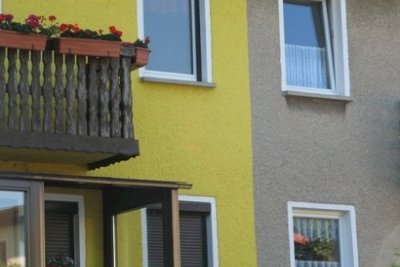
My drive back from Poland, where I had visited Wroclaw and the Churches of Peace, brought me on the Berlin Ring Road. I knew that one of the Housing Estates is located close to the Schönefeld Airport, so I looked up its exact location and decided to just stop by. This site is the Gartenstadt Falkenberg, the earliest of the modernist estates (1913). It is nicknamed Tuschkastensiedlung ("Paintbox Estate").
Like the reviewers below have stated about other parts of this serial nomination, this also is ‘just’ a residential area with ordinary people going about their daily business. The main street is the Gartenstadtweg. Here several types of housing can be seen, all in full colour: apartment blocks, free-standing villas and rows of townhouses. All have their own gardens to grow vegetables and flowers. The streets are lined with trees. I'm not sure which of the houses on this street are original, but there are 93 of them according to the nomination dossier.
A sign at the side of the road advertised ‘Do you want to live in a Unesco World Heritage Site? Now for rent: apartments in the 2003 extension of the Gartenstadt. Only 639 EUR per month!’ Obviously not the real thing, but the area, in general, has a very peaceful feel to it due to the abundance of greenery. I wouldn’t mind living there… (maybe ought to look up the local crime rate first).
Keep reading 0 comments
I first visited Berlin's housing estates in 2006,and was very pleased to find how many survived the war,and how well they had been maintained and restored by the enlightened Berlin authorities.I did not have an exhaustive list of sites at the time,and discovered my hotel was only yards from the Weisse Stadt,which I did not previously know.
I have visited many famous modernist sites -Villa Savoye,Barcelona Pavilion,Quartiers Fruges,Weissenhofsiedlung,Karl Marx Hof,and so on,but the sheer number,scale and setting of the Berlin estates and their lesser-known ,later copies overwhelmed me. The suburbs of Berlin truly show what progressive architecture and landscaping can do to transform the urban environment -I think Berlin is more beautiful than Sienna or Rome,taken as a whole.
Keep reading 0 comments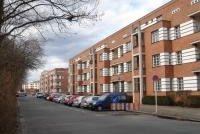
After read Ian’s review, his comment is exactly what I think about Berlin’s new and the third world heritage site. I was not a fan of modernism, but after many good trips seeing lovely modern buildings such as Bauhaus in Weimar, Chilehaus in Hamburg, Rietveld Schorderhuis in Utrecht and Villa Savoye in Poissy, I developed to enjoy this kind of architecture, but Berlin was not my cup of tea.
In 2005, I chose to see Schiller Park Housing Estate, the first apartment where sunlight, air and nature were the main elements for this utopia designed by Bruno Taut. However, the building I saw was exactly what I could see around my hometown neighborhood, red brick apartment with large windows and located next to the park. At first, I even thought this was a wrong place and I really shocked to discover my map and information were correct and this typical building was the place I intended to visit.
I spend only 10 minutes to walk around the place; there was nothing to see since all of them were private houses and the best thing I could do was strolling in nearby Schiller Park. As I mentioned I totally agreed with Ian’s review, these groups of housing estate are very important and undeniable for its effect throughout the world, but to be honest this maybe one of the least inspiring world heritage sites I’ve seen.
Keep reading 0 comments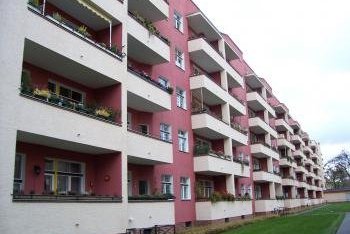
I am still not too sure what to make of this inscription. On the one hand, I support it, these new housing estates were a key feature in redefining low-income/ social housing which has had a massive effect on peoples lives across the world. In counterbalance to this is the fact that they just weren’t that interesting when I paid them a visit. I know that this is a very subjective thing and preserving Heritage shouldn’t rely on just enjoyment, but the estate I visited just didn’t have the fission of visiting other sites with a similar background (Bauhaus, Mies’ Lake Shore Drive Apartments and the early Skyscrapers in Chicago).
Admittedly I did only visit 1 and spied another from the S-Bahn, perhaps had I spent more time going to some of the other Estates I could give a more glowing recommendation but the time I spent in them did not encourage me to forego Berlin’s numerous other attractions.
I managed to visit Wohnstadt Carl Legien on a cold Saturday morning in November 2007, needless to say I was the only ‘tourist’ here, and the residents were looking some what bemusingly at the guy taking endless photos of the blocks of flats. It was a reasonably rewarding visit for me, mostly as I have an interest in the architecture of this period. The blocks were well planned and spacious and there was a good use of colour (they have recently been restored). But on the whole they felt very familiar …
Keep reading 0 comments
